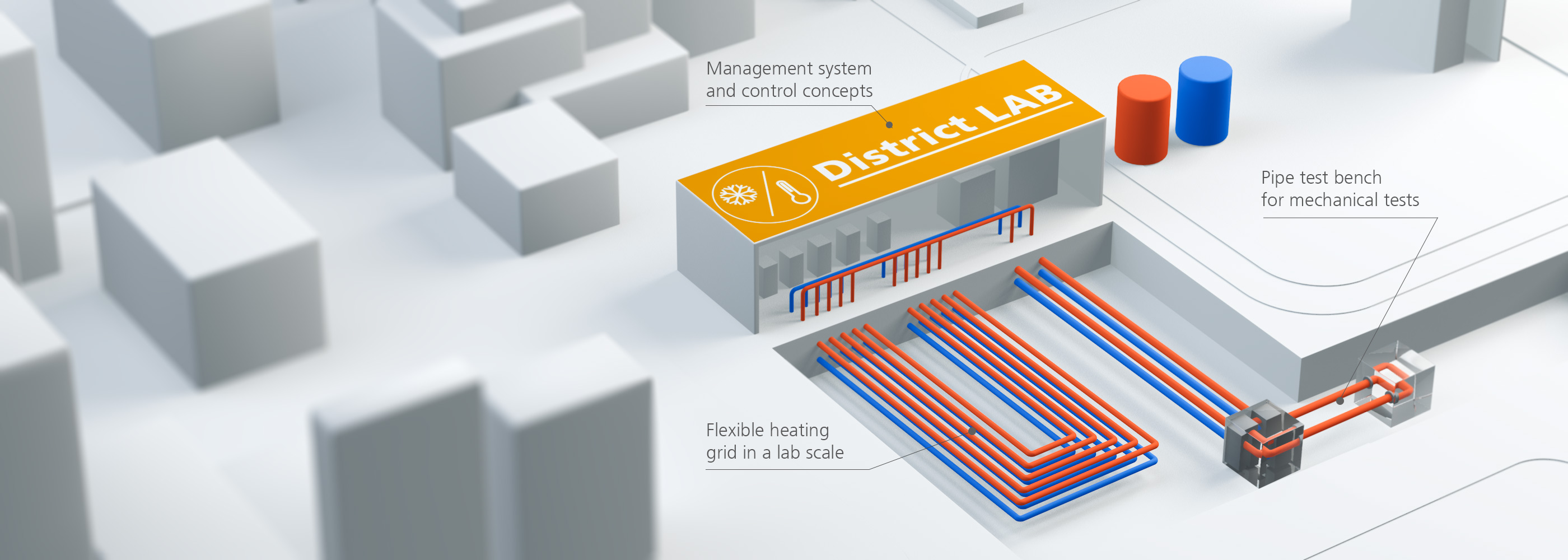The heat supply is an important component of the energy transition and so heating grids are subject to strong decarbonisation, transformation and expansion, especially in the urban context. This requires new technologies and operating models that meet the requirements of the future energy system economically and functionally.
To support these developments, Fraunhofer IEE is building and operating the experimental and test center District LAB.
The main components of the District LAB are a flexible test grid with connected test benchs for heat generators for the district scale as well as a test track for pipe tests. With several hardware-in-the-loop units and a digital control and regulation system, the operating conditions can be set and measured exactly at any time. The flexible and modular structure of the District LAB allows for custom-fit test setups for different requirements.
Together with the experience of the researchers and technicians at the Fraunhofer IEE, the District LAB enables the transparent and consistent experimental development, investigation and validation of solutions, products and operating models for pipe based heat supply.
